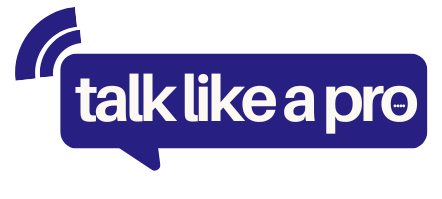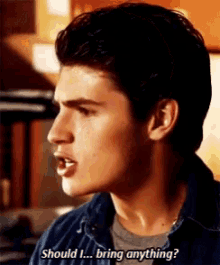Oh, the awkward agony of forced laughter! We’ve all been there, haven’t we?
Get ready to level up your fake laugh game and sail smoothly through those cringe-worthy moments when someone drops a real clunker of a joke.
I’ll be your guide through the treacherous waters of unfunny humor, drawing on my years of experience navigating awkward social situations (and boy, have there been many).
Together, we’ll explore the art of the convincing chuckle, the graceful segue, and the polite escape – all while keeping your dignity intact and social bonds unbroken.
Whether you’re dealing with your boss’s terrible puns, your great-aunt’s outdated jokes, or that one friend who thinks they’re a comedic genius (bless their heart), I’ve got your back.
So buckle up, buttercup! By the end of this article, you’ll be armed with an arsenal of tactics to handle even the most groan-worthy attempts at humor.
Let’s turn those painful silences into smooth social sailing, shall we?
The Anatomy of an Unfunny Joke
Before we dive into survival strategies, let’s break down what makes a joke fall flatter than a pancake in a vacuum.
The Setup That Goes Nowhere
You know the type – it starts promisingly enough, but then…nothing. The story meanders, details pile up, and you find yourself wondering if there’s a point to all this.
The Punchline That Doesn’t Punch
When the big reveal finally comes, it’s met with crickets. Maybe it’s too obvious, maybe it’s too obscure, or maybe it just doesn’t make any sense at all.
The Offensive Fumble
Yikes. Sometimes people try to be edgy and end up stepping right over the line into “not cool” territory.
The Inside Joke That Leaves Everyone Outside
Great for the one person who gets it, awkward for literally everyone else in the room.
The Pop Culture Reference That’s Past Its Expiration Date
“It’s like that scene from Friends!” says your coworker, forgetting that half the office was born after the show ended.
Understanding these common pitfalls can help you recognize an unfunny joke before it reaches its painful conclusion. And trust me, that foresight is GOLD.
Why Fake Laugh? The Social Lubrication of Laughter
Now, you might be thinking, “Why bother faking it? Can’t I just be honest?”
Oh, sweet summer child. Let me explain.
Preserving Social Harmony
Laughter, even the fake kind, helps smooth over potential awkwardness. It’s like social WD-40.
Boosting the Joke-Teller’s Confidence
Sometimes, a little ego boost can go a long way. Your fake laugh might just be the encouragement someone needs to keep trying (and hopefully improve).
Avoiding Uncomfortable Silences
Dead air after a failed joke attempt? Excruciating. A polite chuckle? Much less painful for everyone involved.
Maintaining Relationships
Whether it’s your boss, your in-laws, or a potential client, sometimes a fake laugh is a small price to pay for keeping things cordial.
Remember, we’re not talking about forced guffaws at truly offensive jokes. This is about navigating the minor social speed bumps that come with well-intentioned but poorly executed attempts at humor.
The Art of the Fake Laugh: A Step-by-Step Guide
Alright, time to get down to brass tacks. Here’s how to craft a fake laugh that would fool even the most discerning comedy connoisseur.
Step 1: The Wind-Up
As you sense a joke approaching its ill-fated conclusion, start preparing. Relax your facial muscles, take a subtle breath, and get ready to spring into action.
Step 2: The Soft Launch
Begin with a gentle exhale, almost like a sigh of amusement. This sets the stage for your full fake laugh.
Step 3: The Build
Gradually increase the volume and intensity of your laugh. Start with a chuckle and work your way up.
Step 4: The Peak
Hit your laugh’s high point with a convincing “Ha!” or two. Don’t overdo it – we’re aiming for “amused,” not “hysteria.”
Step 5: The Wind-Down
Ease off the laughter, tapering down to a few final chuckles or a contented sigh.
Step 6: The Follow-Through
Throw in a verbal affirmation like “That’s funny” or “Good one” to really sell it.
Remember, practice makes perfect. Try different variations in the mirror until you find a fake laugh that feels natural to you.
And for the love of all that is holy, please don’t do that obviously fake “Ha. Ha. Ha.” robot laugh. We’re better than that.
Advanced Techniques: Beyond the Basic Fake Laugh
Ready to take your fake laugh game to the next level? Let’s explore some advanced strategies for the social ninja.
The Delayed Reaction
Sometimes, playing it cool can work wonders. Wait a beat after the punchline, then let out a soft “Heh” as if the joke just sunk in. Bonus points if you can muster a slight head shake of amusement.
The Silent Laugh
For those times when audible laughter feels forced, try the silent laugh. Shoulders shaking, eyes crinkling, maybe even slap your knee – all without making a sound. It’s like you’re too amused to even vocalize.
The Snort
A well-timed snort can convey both amusement and surprise. It’s especially effective for those “dad jokes” that are so bad they’re almost good.
The Laugh-Groan Hybrid
When a joke is particularly groan-worthy, try combining a laugh with an exasperated groan. It acknowledges the attempt at humor while also conveying “Oh, you didn’t just say that.”
The Contagious Giggle
If you can pull this off, it’s comedy gold. Start with a small giggle that grows into full-blown laughter. It can actually trigger real laughter in others, turning a dud joke into a genuinely funny moment.
Master these techniques, and you’ll be the Meryl Streep of fake laughter in no time.
When Laughter Isn’t Enough: Escape Routes and Diversions
Sometimes, even the most Oscar-worthy fake laugh can’t save a social situation. That’s when you need to have some exit strategies up your sleeve.
The Topic Change
“Speaking of [tenuous connection to literally anything else], did you hear about [new topic]?” Smooth as butter.
The Urgent Text
Suddenly remember an “important message” you need to send. Bonus points if you can make it look like you’re laughing at something on your phone.
The Drink Refill
“Oh, looks like my glass is empty. Anyone else need a refill?” A classic for a reason.
The Bathroom Break
When all else fails, nature calls. Just don’t hide in there too long – that raises a whole different set of questions.
The Compliment Deflection
Shift focus by complimenting the joke-teller on something unrelated. “You always have the best stories! By the way, where did you get that shirt?”
Remember, the goal is to gracefully move past the awkward moment, not to make the joke-teller feel bad. Tact is key!
The Ethical Considerations: When to Draw the Line
While we’ve been having fun with fake laughs and escape routes, it’s important to address the elephant in the room: sometimes, laughing along isn’t the right thing to do.
Offensive Jokes
If a joke crosses the line into racist, sexist, or otherwise discriminatory territory, fake laughter can be seen as endorsement. It’s okay to let the silence speak volumes here.
Bullying Humor
When jokes are made at someone else’s expense, especially if that person is present, joining in (even with fake laughter) can be hurtful.
Chronic Unfunny Jokers
If someone consistently makes unfunny or inappropriate jokes, constant fake laughter might encourage them to continue. Sometimes, a gentle, honest conversation is needed.
Your Own Discomfort
If fake laughing at certain types of jokes makes you feel uncomfortable or untrue to yourself, it’s okay to opt out.
In these situations, it’s better to prioritize integrity over social smoothness. You can still be polite without compromising your values.
Conclusion: Laughing Your Way to Social Success
Well, folks, we’ve laughed, we’ve cringed, we’ve strategized, and we’ve soul-searched.
Mastering the art of the fake laugh isn’t just about social survival – it’s about being kind, maintaining connections, and sometimes, buying yourself enough time to make a graceful exit.
Remember, at the heart of all this is a simple truth: people generally want to connect and be liked. That fumbling joke-teller? They’re probably just trying to break the ice or lighten the mood.
So the next time you find yourself face-to-face with a joke that’s about as funny as a root canal, take a deep breath, summon your inner actor, and give that poor punchline the chuckle it so desperately needs.
Who knows? Your well-timed fake laugh might just be the confidence boost someone needs to keep trying – and maybe, just maybe, they’ll land a real zinger next time.
Now go forth and laugh, for real or for show. You’ve got this!




